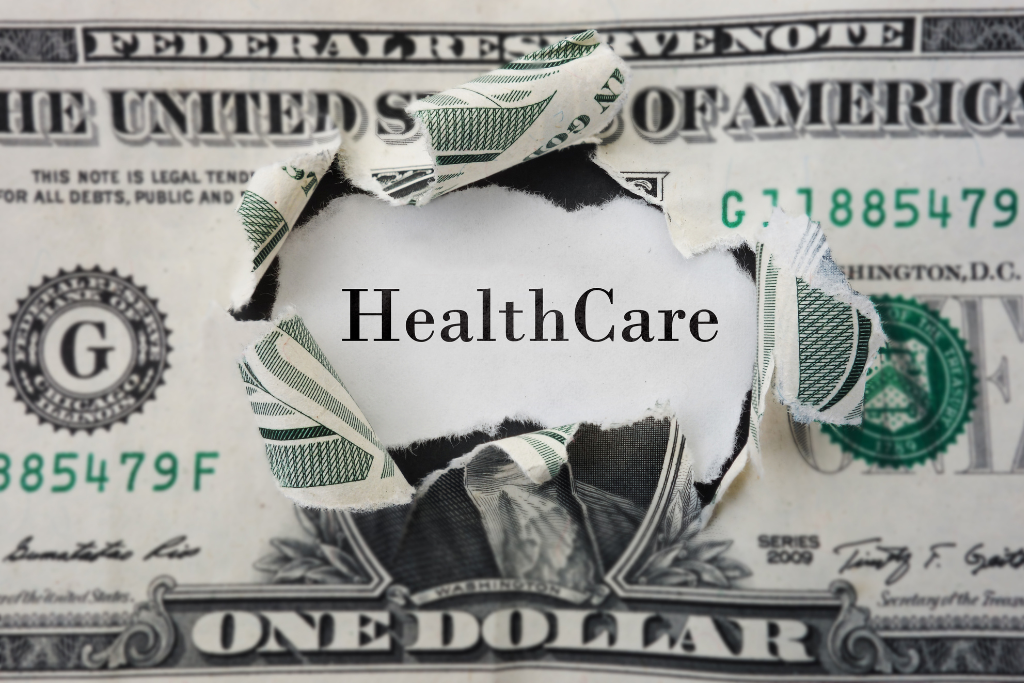
by Gautam Char
Healthcare affordability is no longer just a patient issue. It is an essential issue for all healthcare organizations and their leaders. It’s an organizational imperative. And more than that, it is a systemic warning sign.
The American healthcare system is heading toward a financial reckoning. With rising healthcare costs and out-of-pocket expenses growing faster than inflation and wages, more patients are delaying care, skipping prescriptions, or turning to high-interest loans to manage basic health needs. This is not only a humanitarian crisis it is a threat to the clinical and operational sustainability of healthcare.
The cost of care has been rising steadily for decades, but the recent acceleration in rising healthcare costs is deeply concerning. According to the 2025 Milliman Medical Index, the average annual cost of care for a family of four has now reached $35,119, a 188% increase since 2005. In the same period, wages have only increased by 84%.
As you assess your budget projections, payer contracts, and service line margins, it is critical to understand the drivers of this surge:
These numbers reflect more than rising healthcare costs. They signal an unsustainable imbalance between what care costs and what patients and employers can actually pay. As you refine your growth strategy, ignoring this imbalance is no longer an option.
You may be investing in new technologies, expanding service lines, or improving care coordination, but if your patients cannot afford care, your investment loses value. Healthcare affordability directly influences patient behavior, and the trends are alarming:
These are not marginal cases. These are everyday scenarios in clinics, emergency rooms, and billing offices across the country. As a healthcare leader, this forces you to reconcile two opposing trends: medical innovation is rising, but patient access is shrinking, largely due to rising healthcare costs and the lack of affordable health insurance options.
As more patients forego or delay care due to financial pressures, the impact will ultimately land on your doorstep. If patients defer care, they are likely to:
Additionally, you might also see:
In short, if rising healthcare costs continue and healthcare affordability continues to decline, your facility’s clinical, financial, and operational outcomes will deteriorate, regardless of how efficiently you manage your internal processes.
Over the past two decades, healthcare affordability has declined steadily as rising healthcare costs have consistently outpaced both wage growth and inflation. From 2005 to 2025, total healthcare costs rose by 188%, while wages only grew by 84%. Several interconnected factors contribute to this widening affordability gap:
Drug prices, especially specialty and biologic drugs, have seen steep increases. Many of these medications are administered in outpatient settings, which can compound overall costs when facility fees are added to the drug price. This trend has made pharmacy one of the fastest-growing cost categories in healthcare.
While it is true that inpatient and acute care settings often have higher per-unit costs (especially at teaching hospitals or trauma centers), there has been a large-scale shift of procedures to outpatient settings. These services, once performed in hospitals, are now billed separately by facility and provider, and sometimes include drug administration and device charges. The result is higher cumulative spending in outpatient care over time, even if unit costs in inpatient settings remain higher.
New clinical technologies often drive up operational costs, but reimbursement models do not always keep pace. This disconnect places financial pressure on provider organizations, which may respond by increasing fees or reducing access in less profitable areas.
Insurance design has changed significantly. To control spending, many employers have shifted to high-deductible health plans (HDHPs) or passed more premium costs to employees. While this keeps employer contributions relatively stable, it increases the out-of-pocket healthcare costs for working families. For many patients, this means higher deductibles, co-pays, and coinsurance even when insured. This shift contributes to employee healthcare costs becoming a leading issue for HR departments seeking the best affordable health insurance plans.
While you cannot control all these factors, you can respond strategically.
Here are five strategies you can adopt to maintain balance:
Ensure that patients know their financial responsibility upfront. Offer digital tools that allow real-time cost estimates and flexible payment options.
AI-driven analytics, predictive modeling, and real-time claims management can help identify underpayments and avoid denials, improving net collections.
Identify which lines of service are profitable, underutilized, or vulnerable to non-payment and adjust capacity accordingly.
Partner with payers to align incentives around outcomes rather than volume. Population health strategies can reduce unnecessary utilization.
Trained financial counselors can help patients access subsidies, payment plans, or charity programs before care begins.
These measures can also reduce health benefit claims that go unpaid or are denied due to lack of upfront transparency.
If current trends continue, your organization could experience:
Moreover, your long-term operating margin will be at risk, especially as rising healthcare costs continue to undermine healthcare affordability and increase employee healthcare costs for your workforce.
You cannot sustain excellence in care delivery when the financial infrastructure is crumbling beneath your patients.
As a healthcare executive, you hold the levers of change. Begin by making healthcare affordability part of your boardroom conversations. Engage with policymakers, payers, and community leaders to advocate for:
Internally, build cross-functional task forces to evaluate how your billing practices, care access pathways, and financial policies either ease or exacerbate patient burden. Consider offering or recommending affordable health insurance options to employees to manage employee healthcare costs more effectively.
This is your moment to not only manage costs and operations but also shape access, equity, and public trust. The rise in out-of-pocket healthcare costs and rising healthcare costs is not a temporary market fluctuation. It is a systemic fault line. And your leadership is essential to ensuring that the future of healthcare is not just more efficient, but more accessible.
The era of doing more with less is behind us. Now, it is about doing better with what you have and ensuring that healthcare affordability, affordable health insurance, and control over rising healthcare costs are at the heart of every decision you make.

Gautam Char is a seasoned business executive who is highly skilled in running healthcare revenue cycle management services and product companies that value to clients and investors.

2424 North Federal Highway, Suite 205
Boca Raton, FL 33431